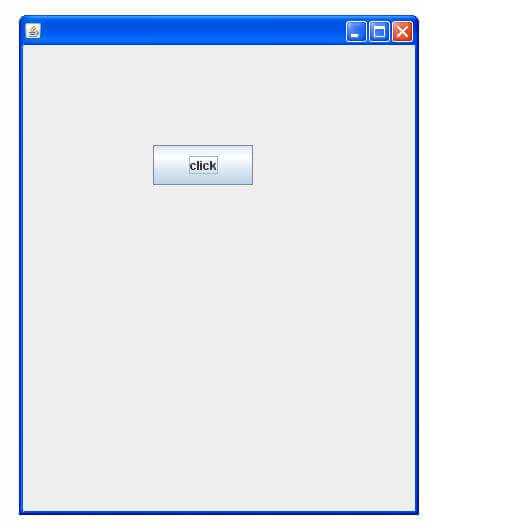Java Swing
Java Swing is a part of Java Foundation Classes (JFC) that is used to create window-based applications. It is built on the top of AWT (Abstract Windowing Toolkit) API and entirely written in java.
Unlike AWT, Java Swing provides platform-independent and lightweight components.
The javax.swing package provides classes for java swing API such as JButton, JTextField, JTextArea, JRadioButton, JCheckbox, JMenu, JColorChooser etc.
Difference between AWT and Swing
There are many differences between java awt and swing that are given below.
| No. | Java AWT | Java Swing |
|---|---|---|
| 1) | AWT components are platform-dependent. | Java swing components are platform-independent. |
| 2) | AWT components are heavyweight. | Swing components are lightweight. |
| 3) | AWT doesn't support pluggable look and feel. | Swing supports pluggable look and feel. |
| 4) | AWT provides less components than Swing. | Swing provides more powerful components such as tables, lists, scrollpanes, colorchooser, tabbedpane etc. |
| 5) | AWT doesn't follows MVC(Model View Controller) where model represents data, view represents presentation and controller acts as an interface between model and view. | Swing follows MVC. |
What is JFC
The Java Foundation Classes (JFC) are a set of GUI components which simplify the development of desktop applications.
Hierarchy of Java Swing classes
The hierarchy of java swing API is given below.
Commonly used Methods of Component class
The methods of Component class are widely used in java swing that are given below.
| Method | Description |
|---|---|
| public void add(Component c) | add a component on another component. |
| public void setSize(int width,int height) | sets size of the component. |
| public void setLayout(LayoutManager m) | sets the layout manager for the component. |
| public void setVisible(boolean b) | sets the visibility of the component. It is by default false. |
Java Swing Examples
There are two ways to create a frame:
- By creating the object of Frame class (association)
- By extending Frame class (inheritance)
We can write the code of swing inside the main(), constructor or any other method.
Simple Java Swing Example
Let's see a simple swing example where we are creating one button and adding it on the JFrame object inside the main() method.
File: FirstSwingExample.java

Example of Swing by Association inside constructor
We can also write all the codes of creating JFrame, JButton and method call inside the java constructor.
File: Simple.java
The setBounds(int xaxis, int yaxis, int width, int height)is used in the above example that sets the position of the button.
Simple example of Swing by inheritance
We can also inherit the JFrame class, so there is no need to create the instance of JFrame class explicitly.
File: Simple2.java

Comments
Post a Comment